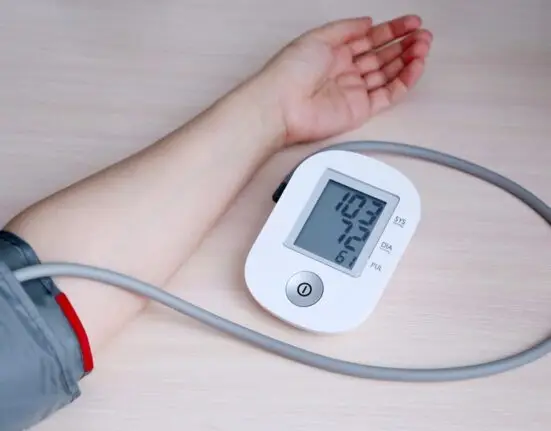Introduction
High blood pressure during pregnancy, also known as pregnancy-induced hypertension, is a significant health concern that can affect both the mother and the developing baby. It encompasses a range of conditions that can emerge during pregnancy, including chronic hypertension, gestational hypertension, and preeclampsia. Various factors contribute to the onset of high blood pressure during pregnancy, including lifestyle choices, age, and the type of pregnancy. For instance, women who are pregnant for the first time, those carrying multiples, or those undergoing assisted reproductive technologies are at increased risk. Additionally, existing conditions such as obesity, diabetes, and a family history of hypertension can further elevate this risk. Understanding these factors, recognizing the symptoms, and adhering to preventive measures are crucial for ensuring a healthy pregnancy and minimizing complications.
1.Causes of high blood pressure during pregnancy
High blood pressure during pregnancy can have many different causes such as obesity, lack of exercise, smoking, first time pregnancy, family history of high blood pressure during pregnancy, twins, age above 35 years, test tube baby, diabetes etc.
2.Risk factors for high blood pressure during pregnancy
A few risk factors that increase the likelihood of high blood pressure during pregnancy.
2.1 lifestyle
Unhealthy lifestyle choices that can lead to high blood pressure during pregnancy include what you eat, drink, inactivity, sleeping patterns, work patterns, and weight.
2.2 Type of pregnancy
Following are the different types of pregnancy.
2.2.1 First pregnancy
Women who are pregnant for the first time are more likely to develop high blood pressure during pregnancy, but this problem goes away after childbirth.
2.2.2 Having more than one child
If the pregnant woman is expected to give birth to more than one child, then the risk of high blood pressure increases many times during pregnancy, because the body has to work hard to support more than one child.
2.2.3 Use of IVF
Assistive technologies used in pregnancy increase the risk of high blood pressure during pregnancy.
2.2.4 Age
Age can also be an important factor in high blood pressure during pregnancy, and women who have had high blood pressure before pregnancy are also more likely to experience high blood pressure during pregnancy.
3.Types of pregnancy-related hypertensive conditions
High blood pressure during pregnancy can be divided into three different conditions.
3.1 High blood pressure
Sometimes a woman has high blood pressure even before she gets pregnant, this is called chronic high blood pressure and this blood pressure is usually treated with medication. Doctors also consider high blood pressure in the first 20 weeks of pregnancy as chronic high blood pressure.
3.2 Gestational hypertension
Gestational hypertension develops after the 20th week of pregnancy.
3.3 Chronic hypertension with preeclampsia
Women who have high blood pressure before becoming pregnant can develop preeclampsia when they experience protein in the urine or pregnancy complications as their pregnancy progresses.
4. Complications of hypertension during pregnancy
High blood pressure during pregnancy can lead to various complications
4.1 Preeclampsia
This condition can seriously damage your brain and other organs, including your kidneys. Preeclampsia, also known as toxemia, can be life-threatening if left untreated. Symptoms of preeclampsia include unusual swelling of the hands and face, persistent pain, changes in vision, upper abdomen. Pain in stomach, nausea after pregnancy, difficulty in breathing. Preeclampsia can be dangerous for both mother and baby.
4.2 HELLP syndrome
HELLP stands for hemolysis, low liver enzymes and low platelets. This can be a complicated condition and can be life-threatening. Symptoms include nausea, vomiting, headache. This syndrome can cause severe damage to vital organs. Intensive care is required to save the life of mother and baby, and sometimes preterm delivery may be required.
4.3 Impact on child development
High blood pressure during pregnancy can also affect the development of the baby, resulting in low birth weight, placental abruption, preterm delivery i.e. delivery before 38 weeks of pregnancy. The chances of a cesarean delivery (commonly called a C-section) also increase.
5. Prevention of high blood pressure during pregnancy
Risk factors for high blood pressure, such as obesity, can be reduced through diet and exercise, in addition to avoiding smoking or drinking alcoholic beverages during pregnancy, giving up unnecessary salt intake. Excessive consumption of salt is harmful for both the pregnant woman and the baby. Also, stay away from stress and do yoga or meditation for this.
6.Important Instructions
If untreated, high blood pressure during pregnancy can be life-threatening for both mother and child, and complications from high blood pressure can be the second leading cause of maternal death. So it is important to contact a doctor in case of any kind of symptoms.
Conclusion
High blood pressure during pregnancy poses substantial risks, including preeclampsia and HELLP syndrome, which can have serious implications for both mother and baby. The potential complications such as preterm birth, low birth weight, and increased likelihood of cesarean delivery underscore the importance of effective management and preventive strategies. Maintaining a healthy lifestyle, including proper diet, exercise, and stress management, can help mitigate the risk. Regular prenatal care and prompt medical attention are essential to monitor and manage blood pressure levels throughout pregnancy. By addressing risk factors and following medical advice, expectant mothers can significantly reduce the chances of adverse outcomes and promote a safer, healthier pregnancy experience for both themselves and their babies.





Leave feedback about this